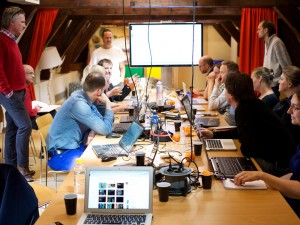
“If you want something new, you have to stop doing something old.” -Peter Drucker
Throughout my career in both the private and public sectors, change has been a constant theme.
We know that as the result of new government regulations or technological innovation, change creates winners and losers. What is less obvious is the nature of change in business today and the way innovation forces leaders to respond proactively and with foresight.
We’ve all read about, and many have experienced, some form of “change management”, “organizational transformation”, or “leadership alignment”.
Last year, an article in Forbes challenged readers to consider change as not merely incremental or disruptive, but pervasive. While the speed of technological innovation requires business leaders to respond in ways that either allow their companies to adapt and exploit new opportunities or face irrelevancy, the nature of modern innovation means this process is ongoing.
Product life cycles and even organizational life cycles are dramatically compressed. Intense global competition is a driving accelerator of relentless change as well.
Leading During Change
Business leaders can be left feeling frustrated by constantly fighting the fires of competitors’ innovative ideas while also encouraging innovation within their own companies. However, decision making in this dynamic environment can be streamlined by creating a process for anticipating and responding to opportunities brought about by innovation and change.
- Recognize the pervasive nature of change. Effective leaders realize that the pace of technological innovation means responding to change is a never-ending process.
- Respond by first altering strategy. Effective leaders reconsider strategy first, rather than the capabilities of their current organizational structure or people.
- Organizational structure must nimbly adapt to the new strategy. Strategy dictates structure and serves to support the direction set by leadership.
- Are the right people in the right jobs? Changes in organizational structure require a re-evaluation of the skill sets and experience necessary to execute a strategy.
Firms with a core competency of quickly and effectively exploiting the opportunities created by change will benefit from a competitive advantage in the marketplace. A glance at the 10/24/14 issue of The Wall Street Journal headlines highlights the need for leadership to proactively seek ways to adapt to the ever-changing marketplace: Amazon Stumbles on High Spending, Gucci Finds Its Brand of Luxury a Tough Sell, Comcast Dubious About HBO’s Web Video, Coke’s Marketing Chief Is Out After Poor Results…
The Speed of Change
The speed of change requires quick, but not hurried responses, letting go of outdated strategy, however beautifully it is supported by the current organizational structure and employee skill sets.
In order to win the struggle produced by technological innovation, business leaders must anticipate change and be willing to adapt strategy, organizational structure, and people to the new environment.
As Peter Drucker succinctly stated, “Winning the change game requires leaders who are able to let go of methods that have succeeded in the past in order to win in the future.”
Photo courtesy of Sebastiaan ter Burg.


